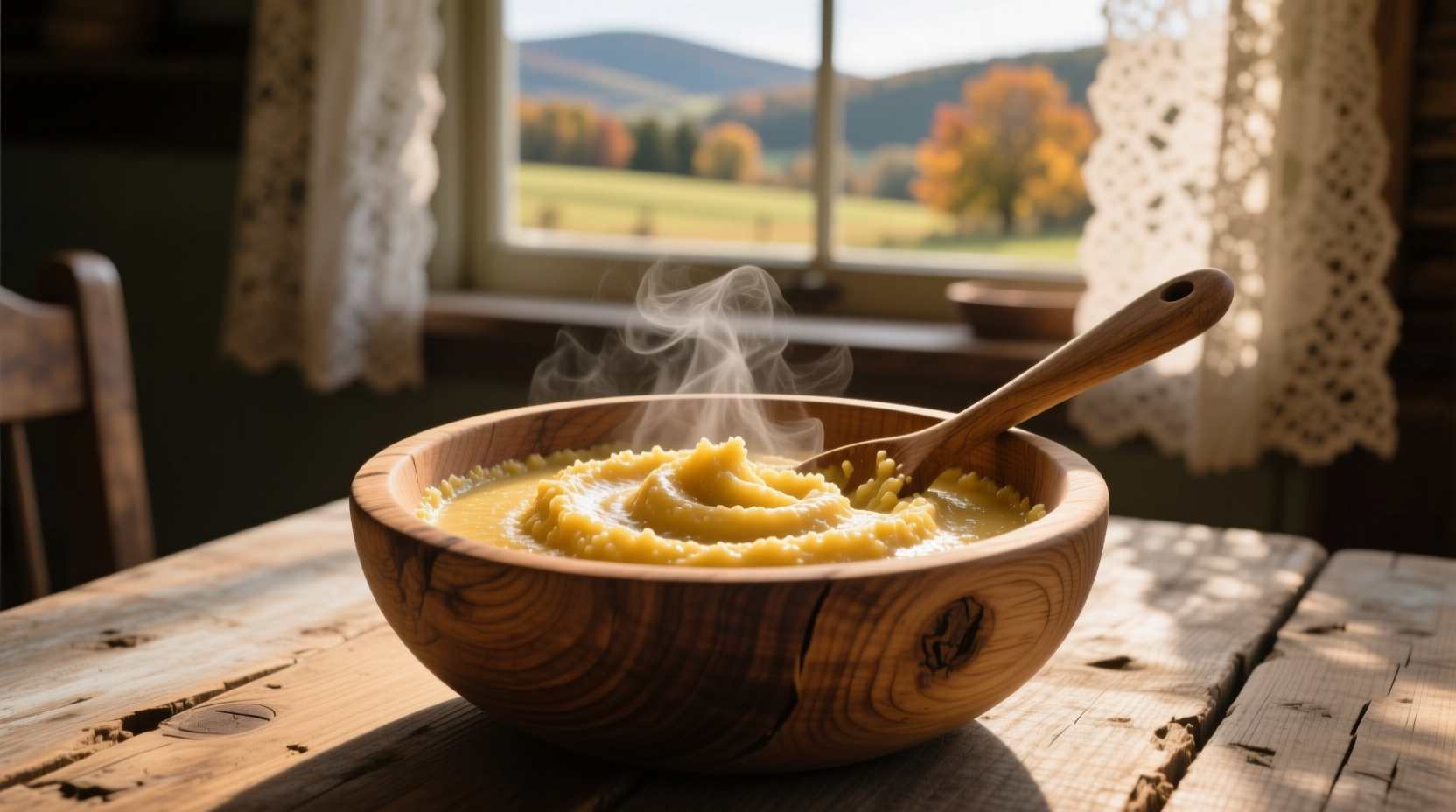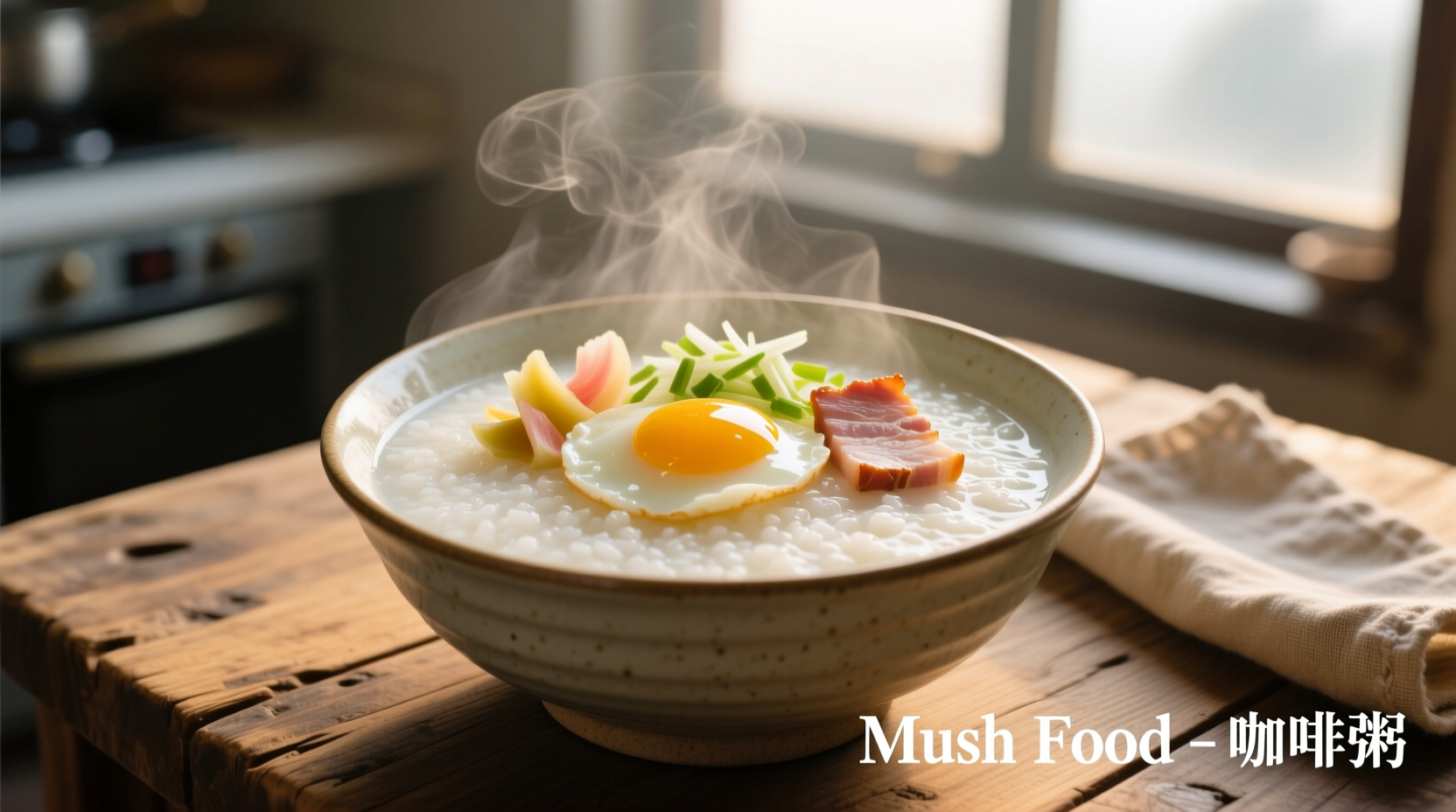Mush food is a simple, thick porridge made primarily from grain (most commonly cornmeal) boiled in water or milk until it reaches a soft, homogeneous consistency. Historically significant as a staple food across multiple cultures, it's valued for its nutritional profile, ease of digestion, and versatility in both traditional and modern culinary applications.
Ever wondered what exactly mush food is and why it's stood the test of time across so many cultures? You're not alone. This humble dish has nourished generations worldwide, from Native American communities to European settlers and beyond. In this comprehensive guide, you'll discover not just the basic definition, but the rich history, nutritional benefits, and practical ways to incorporate this versatile food into your modern kitchen.
Understanding the Core Definition of Mush Food
At its essence, mush food represents one of humanity's simplest culinary creations—a thick, soft porridge made by slowly cooking ground grains in liquid. While cornmeal mush dominates American culinary history, variations exist globally using different grains like oats, rice, or millet.
The term "mush" specifically refers to the final texture—smooth, cohesive, and spoonable without distinct grain separation. This distinguishes it from grittier preparations like polenta or coarse grits, which maintain more individual grain structure.
| Characteristic | Mush Food | Similar Dishes |
|---|---|---|
| Texture | Smooth, homogeneous | Gritty or distinct grains |
| Primary Grain | Cornmeal (typically fine-ground) | Corn (coarse), oats, wheat |
| Cooking Liquid Ratio | Higher liquid-to-grain (3-4:1) | Lower liquid-to-grain (2-3:1) |
| Traditional Serving Temperature | Hot, sometimes cooled and sliced | Primarily hot |
The Historical Journey of Mush Food
Mush food's story begins long before European settlers arrived in North America. Indigenous communities, particularly the Iroquois and other Eastern Woodlands tribes, developed corn-based mush as a dietary staple centuries ago. They called it "rockahominy" or "sofkee," preparing it by nixtamalizing corn (treating it with wood ash or lime) to improve nutrition and flavor.
According to research from the Smithsonian National Museum of the American Indian, Native Americans would grind dried corn between stones, then boil it slowly to create a nourishing porridge that provided sustained energy for daily activities. This knowledge transferred to European colonists, who adopted and adapted the technique using their own grains when corn wasn't available.
During America's colonial period and westward expansion, mush became a survival food for pioneers and settlers. Its importance is documented in the Library of Congress's American Folklife Center archives, which note that cornmeal mush required minimal equipment, stored well, and could be prepared with basic ingredients available to even the poorest households.

Modern Applications and Variations
While traditionally associated with historical or rural contexts, mush food has found renewed relevance in contemporary cooking for several practical reasons:
- Baby food - Pediatric nutritionists often recommend smooth cornmeal mush as an ideal first solid food due to its gentle texture and hypoallergenic properties
- Digestive health - Registered dietitians note its value for individuals with sensitive digestive systems or recovering from illness
- Emergency preparedness - Food security experts highlight its shelf-stable ingredients and minimal preparation requirements
- Cultural preservation - Culinary historians work with indigenous communities to maintain traditional preparation methods
Modern adaptations include savory versions with added herbs and spices, sweet preparations with maple syrup or fruit compotes, and even innovative uses in baking where cooled mush serves as a moisture-rich ingredient.
How to Prepare Authentic Mush Food
Creating traditional mush requires patience and attention to technique. Here's a straightforward method that honors historical preparation while accommodating modern kitchens:
- Measure 1 cup fine-ground cornmeal (stone-ground preferred for authenticity)
- Slowly whisk into 3-4 cups of boiling water or milk (water creates a more traditional flavor)
- Reduce heat to low and cook for 20-30 minutes, stirring constantly
- Maintain gentle simmer—never allow to boil vigorously
- Season with salt to taste (traditionally 1/2 teaspoon per cup of dry cornmeal)
- Cook until mixture pulls away from pot sides when stirred
For historical accuracy, many culinary historians recommend using a cast-iron pot and wooden spoon, as these materials distribute heat evenly and prevent scorching. The University of Illinois Extension notes that proper mush should have a consistency that holds its shape briefly when scooped but yields to gentle pressure.
Nutritional Profile and Health Considerations
Mush food offers several nutritional advantages that explain its historical importance:
- High in complex carbohydrates for sustained energy
- Naturally gluten-free (when made with pure cornmeal)
- Good source of iron and B vitamins
- Low in fat and sodium (when prepared without additions)
- Easily digestible, making it suitable for sensitive stomachs
The USDA FoodData Central database shows that a standard serving of cornmeal mush (1 cup prepared) contains approximately 150 calories, 30g carbohydrates, 3g protein, and provides 10% of the daily recommended intake of iron. When prepared with milk instead of water, it gains additional calcium and protein.
Common Misconceptions About Mush Food
Several misunderstandings persist about this traditional food:
- Misconception: Mush is the same as grits or polenta
Reality: While similar, mush uses finer cornmeal and has a smoother texture with higher liquid ratio - Misconception: Mush is only for babies or invalids
Reality: Historically, it was a staple food for entire communities, including laborers needing sustained energy - Misconception: All cornmeal mush is sweet
Reality: Traditional preparations are savory; sweet versions are modern adaptations
Food historians like those at the National Museum of American History emphasize that understanding these distinctions helps preserve culinary heritage while making informed choices about incorporating traditional foods into modern diets.
Practical Tips for Modern Mush Preparation
While traditional preparation requires constant stirring, modern cooks can employ these techniques for consistent results:
- Use a double boiler to prevent scorching during extended cooking
- Add a small amount of butter or oil to the cooking liquid to prevent surface skin formation
- Cook over the lowest possible heat setting—mush develops best with gentle, prolonged cooking
- For creamier texture, substitute some water with milk or plant-based alternatives
- Store leftovers in shallow container and refrigerate; reheats well with additional liquid
Professional chefs specializing in historical American cuisine note that the key to perfect mush lies in patience—the slower the cooking process, the more developed the flavor and smoother the texture becomes.











 浙公网安备
33010002000092号
浙公网安备
33010002000092号 浙B2-20120091-4
浙B2-20120091-4